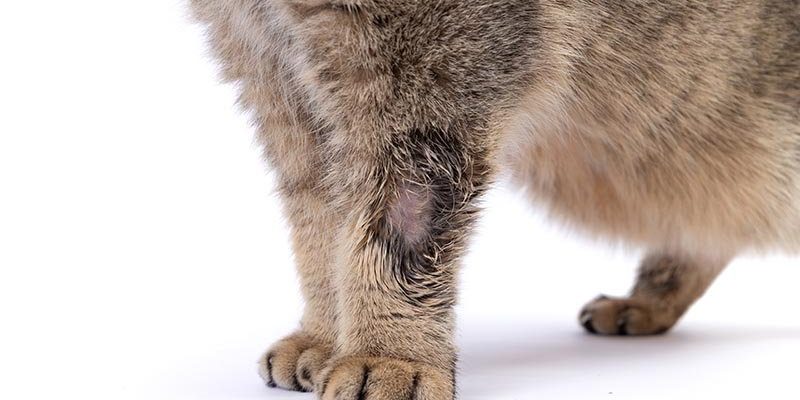
Let’s get into this topic in a way that feels more like a friendly chat than a lecture. Picture it like a cozy afternoon coffee session where we dive into the world of mammals, parasites, and the surprising ways nature finds balance. We’ll explore how certain mammals might show resistance to wolf worms, and what that could mean for their survival.
What Are Wolf Worms?
Wolf worms, scientifically known as *Codronella morula*, are parasitic larvae that primarily target the skin of mammals. You might be wondering what exactly these little critters do. Essentially, they invade their host’s skin and cause irritation, leading to infections and sometimes severe health issues.
These parasites typically end up in animals like wolves, foxes, and even domesticated pets like dogs. The larvae can burrow under the skin, causing painful sores as they develop. Think of it like having an uninvited guest who just won’t leave your home—disruptive and annoying!
Interestingly, not all mammals seem equally affected. Some manage to fend off these pests better than others. This garners curiosity about why certain species or individuals within species show resistance.
How Do Mammals Show Resistance?
Resistance to wolf worms often looks different depending on the species in question. Some mammals have natural defenses that allow them to endure or even eliminate these infections more effectively than others.
For example, wolves in certain environments may have evolved skin that is less hospitable to these parasites. This evolution is like building a stronger wall to keep out unwanted guests. In contrast, other animals might have a robust immune response that allows them to fight off infections more successfully once they get infected.
Additionally, behaviors like grooming can play a huge role. Animals that frequently groom themselves or each other may be better equipped to remove larvae before they can settle in. Here’s the thing: Those simple actions contribute to overall health and lower infection rates.
Species Known for Resistance
While many mammals can be affected by wolf worms, some species demonstrate noteworthy resistance. **Wolves** themselves are often studied in this context. They have developed significant adaptive strategies to cope with infections, making them an interesting case study.
Additionally, certain **rodent species** have shown resilience, likely due to their faster healing processes and robust immune systems. It’s fascinating to consider how these adaptations evolve over time. Each generation might build upon the last, creating a tougher breed that stands a better chance against parasites.
Let’s not forget the role of environmental factors that contribute to this resistance. For instance, animals living in cleaner, more stable habitats often have lower parasite loads, showcasing how health and surroundings can impact resistance levels.
The Role of Immune Systems
Now, let’s dive into the immune systems of these mammals. The immune system is like a complex defense network that protects against invading pathogens. In mammals that show resistance to wolf worms, the immune responses are usually strikingly efficient.
Some mammals produce specific antibodies geared towards recognizing and neutralizing wolf worm larvae. It’s a bit like having a specialized team of security experts on standby to handle an invasion. This ensures that when a wolf worm tries to invade, there’s a defense in place ready to tackle the problem.
In addition to antibodies, these mammals might have specialized cells that can identify and destroy infected tissues. This rapid response keeps the infection at bay and helps with quick recovery. Just imagine having an emergency brigade ready to handle any potential threats!
Environmental Influences on Resistance
The environment plays a big role in whether mammals can resist wolf worms. Animals living in areas with high parasite loads often have to develop better defenses. It’s survival of the fittest at its finest.
One major influencing factor is **climate**. Warmer climates can promote higher populations of wolf worms, pushing local mammals to adapt or face increased risks of infection. Conversely, in colder regions, the life cycle of the wolf worm might be slowed down, resulting in less pressure on mammals to develop robust defenses.
Habitat also matters. Areas that promote healthy ecosystems—think clean water and abundant food—can support stronger populations of resistant mammals. These environments provide the necessary resources for mammals to maintain good health, making them less susceptible to parasite infections.
Implications for Conservation Efforts
Understanding how certain mammals show resistance to wolf worms has important implications for conservation efforts. When we learn about these natural defenses, we can better appreciate the delicate balance of ecosystems. This knowledge helps in developing strategies to maintain species that might be struggling against parasites.
By preserving habitats that encourage healthy animal populations, we can support the natural evolution of resistance traits. This proactive approach not only helps individual species but also keeps ecosystems thriving. Healthy ecosystems function more effectively, providing benefits that ripple out to other wildlife and even humans.
Conservationists may focus on how to strengthen habitats, keeping parasite loads in check and enabling mammals to maintain their resistance over generations.
Exploring the resistance of certain mammals to wolf worms opens up a fascinating window into nature’s resilience. It’s a reminder that life finds a way, adapting and evolving amidst challenges like parasitic invasions.
Understanding the mechanisms behind this resistance highlights the importance of environmental health and species preservation. As we work to protect ecosystems, we’re not just helping animals; we’re also ensuring the balance of life on our planet remains intact.
So, the next time you hear about wolf worms, think of the incredible resilience of the mammals that fight back. They serve as a testament to nature’s ingenuity, reminding us that in the face of challenges, some creatures often find a way to thrive.

